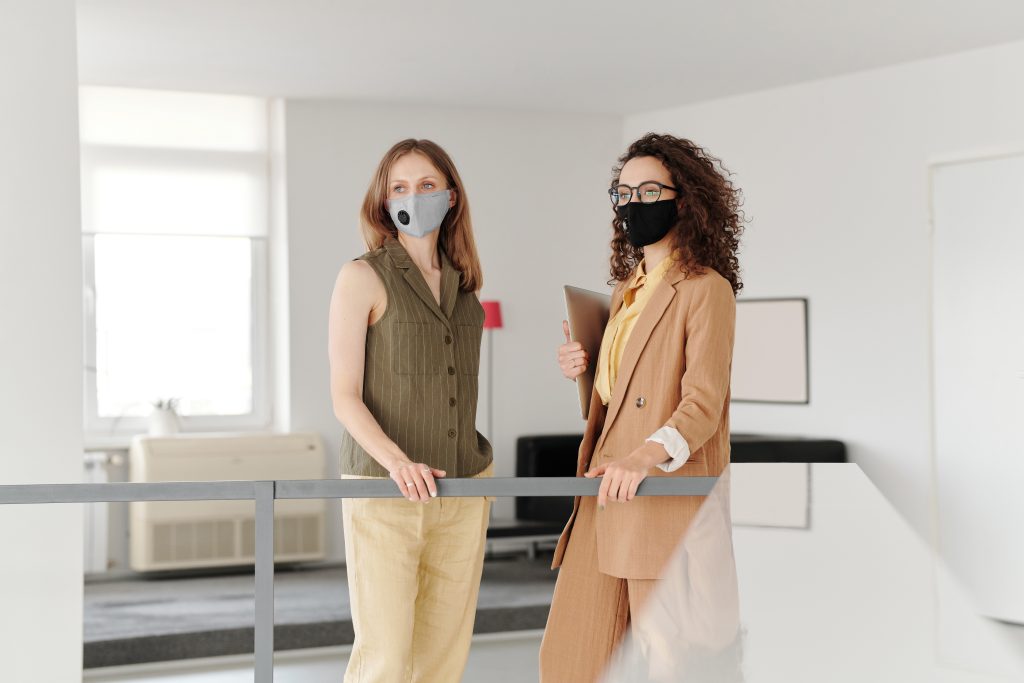Encouraging your employees to practice social distancing and reconfiguring your workplace with safety in mind is more important than ever before. Luckily, all it takes are some simple adjustments to make sure employees can respect the 6-foot safety distance without disrupting the team’s productivity. Here are three ideas for social distancing at work to help you navigate the reopening phase.
1. Reconfigure your workspaces
Ideally, you should take this step before reopening your facility. Make sure to set up workstations so that team members are not facing each other. If this is not feasible, install plastic or Plexiglass partitions between workstations. Reconfigure the office setting so that each employee sits at least 6 feet away from the others. Consider using tape marks to delimit areas, so employees will understand more clearly how to manage social distancing in the office.
If you have a reception area, consider eliminating seating and requiring guests to call ahead of time to get an appointment. This way, you’ll be able to make sure that there aren’t too many guests at the same time. If you work in retail, pay attention to where the credit card reader or other terminal for electronic payments is, and move it as far away as possible from the cashier. Also, reschedule stocking activities so they don’t happen during peak hours.
2. Pay attention to break rooms and office cafeterias
Your best way to teach employees how to do social distancing at work, especially in common areas like the break room, is placing easy-to-read signage in a well-visible location. In addition, identify frequently touched areas and have the janitorial staff sanitize them several times a day. You should also temporarily remove highly touched tools like coffee makers and water coolers and consider replacing them with touchless alternatives.
If you have vending machines, provide disinfectant wipes or sprays so that the employees can sanitize them between uses. Offer individually wrapped snacks instead of bulk food, and replace traditional silverware with individually wrapped alternatives.
Office cafeterias should follow several rules as well. Eliminate self-service food areas, including communal seasonings and dinnerware. Provide individually wrapped seasonings instead, and have servers wear gloves and face masks. You must also limit the capacity of the cafeteria, maybe with staggered lunch schedules, and reconfigure the seating areas to allow more space between tables. Another good idea to prevent overcrowding is setting up an online system that allows employees to pre-order food from the office cafeteria from their own desk and encouraging them to use it.
3. Limit the number of participants at in-person meetings
Always opt for virtual meetings if possible, but if you need an in-person meeting, limit the number of participants to 10 or less. In the conference room, provide plenty of disinfectant wipes so that the employees can sanitize equipment like computers and mice after each use. You could also put a hand sanitizer dispenser in the room.
The meeting shouldn’t last for too long, and you can use signage to discourage employees from lingering in the conference room and socializing after it has ended. Create a disinfection schedule so that someone sanitizes the conference room at least once every day.




